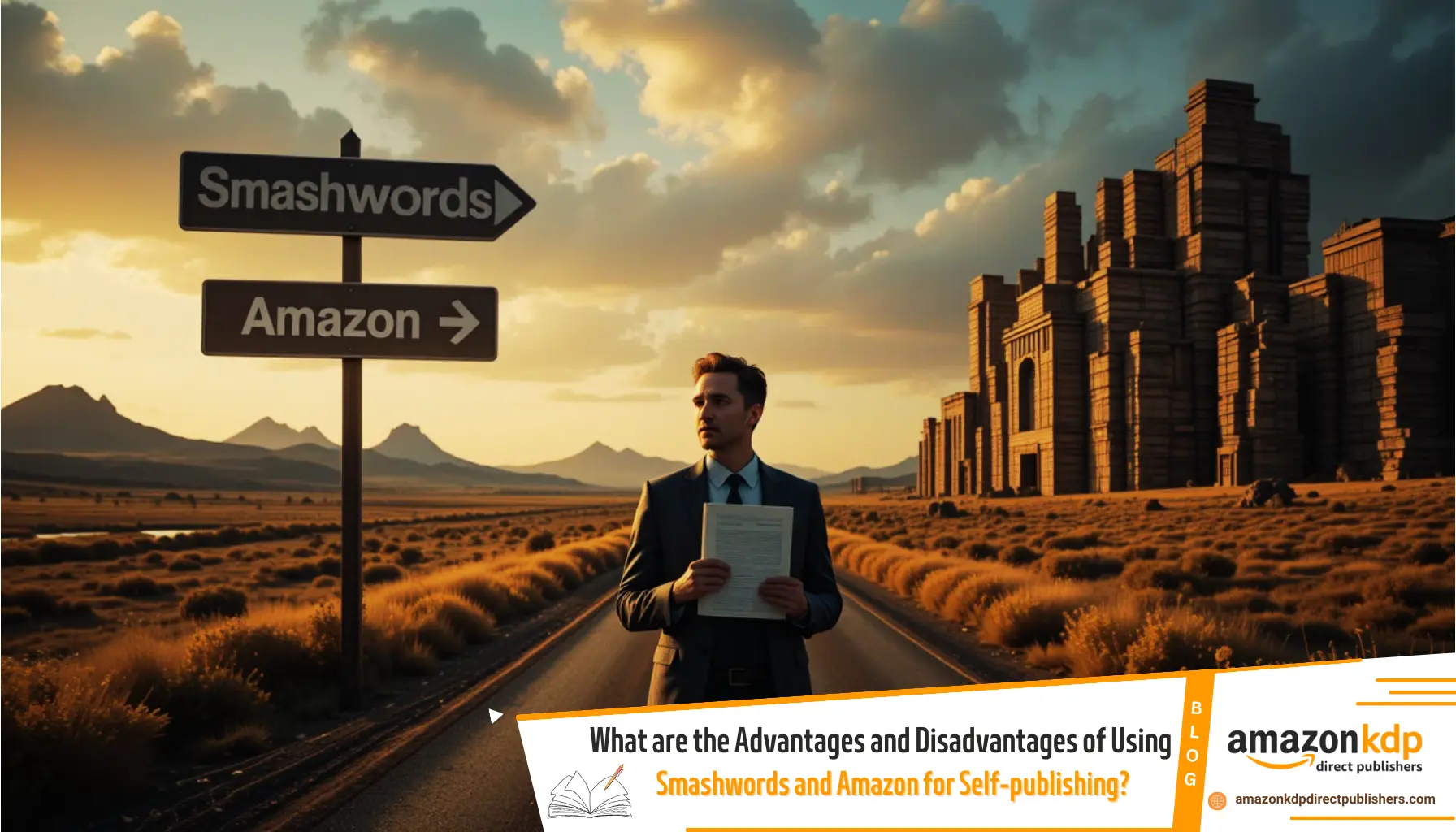How to Compare Smashwords and Amazon for Your Book
When deciding between Smashwords and Amazon for self-publishing, it’s important to weigh the advantages and disadvantages of each platform. Here’s a detailed comparison based on available information:
Advantages of Smashwords
Wider Distribution to Multiple Retailers
Smashwords allows authors to distribute their eBooks to multiple platforms, including Kindle, Apple Books, Kobo, and Nook, all from one place. This makes it easier to reach readers across various eBook stores without needing separate accounts for each retailer.
Higher Royalties on Direct Sales
For sales made directly through Smashwords, authors can earn royalties of up to 85%, which is competitive compared to Amazon’s standard 70% royalty rate for eBooks priced between $2.99 and $9.99.
Simpler Publishing Process
Smashwords is often considered simpler to use than Amazon, especially for authors who want a straightforward upload process without navigating Amazon’s more complex KDP interface.
Control Over ISBNs
Unlike Amazon, where free ISBNs are provided but list Amazon as the publisher, Smashwords allows authors to retain control over their ISBNs, ensuring the book is listed in the author’s name in databases like Books in Print.
No International Barriers or Scaled Royalties
Smashwords does not impose international barriers or scaled royalties, meaning authors receive consistent payouts regardless of where the sale occurs.
DRM-Free eBooks
Smashwords offers DRM-free (Digital Rights Management) eBooks, giving readers more flexibility with their purchases. However, this can also be a drawback if you’re concerned about piracy.
Disadvantages of Smashwords
Limited Marketing Tools
Unlike Amazon, which provides robust advertising options like Sponsored Product Ads and Kindle Countdown Deals, Smashwords lacks advanced marketing tools to promote your book.
Smaller Direct Audience
Amazon has a massive built-in audience due to its dominance in online retail. Smashwords, on the other hand, primarily acts as a distributor and doesn’t have the same level of direct traffic to its platform.
Less Visibility for Bestsellers
Amazon prioritizes bestsellers and heavily promotes popular titles, while Smashwords focuses on providing a collection of self-published works without emphasizing rankings or lists.
Formatting Requirements
Smashwords has strict formatting guidelines known as the “Meat Grinder,” which can be challenging for authors unfamiliar with eBook formatting. If your file doesn’t meet these requirements, it may not pass their system.
No Print-on-Demand Option
Unlike Amazon’s Kindle Direct Publishing (KDP), which offers both eBook and paperback publishing, Smashwords focuses exclusively on digital distribution. Authors looking to publish print books will need to use another service like IngramSpark or Amazon KDP.
Advantages of Amazon KDP
Massive Audience Reach
Amazon is the largest online retailer and eBook marketplace, offering unparalleled visibility and access to millions of readers worldwide.
Advanced Marketing Tools
Amazon provides powerful promotional tools, such as Kindle Countdown Deals, Free Book Promotions, and Amazon Ads, to help authors boost their book’s visibility.
Print-on-Demand (POD)
Amazon KDP supports both eBooks and paperbacks, allowing authors to publish physical copies of their books without upfront printing costs.
Integration with Author Central
Amazon’s Author Central lets authors create a professional profile, track sales data, and engage with readers through features like blog posts and customer reviews.
Disadvantages of Amazon KDP
Exclusivity Requirements (KDP Select)
To participate in KDP Select, authors must make their eBook exclusive to Amazon for 90 days. While this grants access to Kindle Unlimited and promotional tools, it limits distribution to other retailers.
Lower Royalties for Higher-Priced Books
For eBooks priced above $9.99, Amazon reduces the royalty rate to 35%, which is significantly lower than Smashwords’ 85% for direct sales.
International Royalty Scaling
Amazon scales royalties for international sales based on exchange rates and local taxes, which can reduce earnings for authors selling globally.
DRM Restrictions
While Amazon offers DRM protection for eBooks, some readers prefer DRM-free options, which Smashwords provides by default.
Conclusion

Choosing between Smashwords and Amazon KDP depends on your goals as an author. If you prioritize wider distribution, higher royalties on direct sales, and control over ISBNs, Smashwords may be the better choice. On the other hand, if you value marketing tools, massive audience reach, and print-on-demand options, Amazon KDP is likely the superior platform. Ultimately, many authors choose to use both platforms to maximize their book’s reach and take advantage of the unique benefits each offers.






